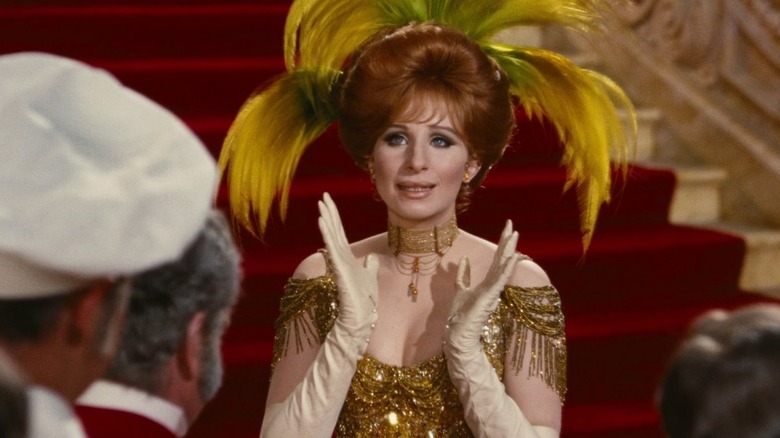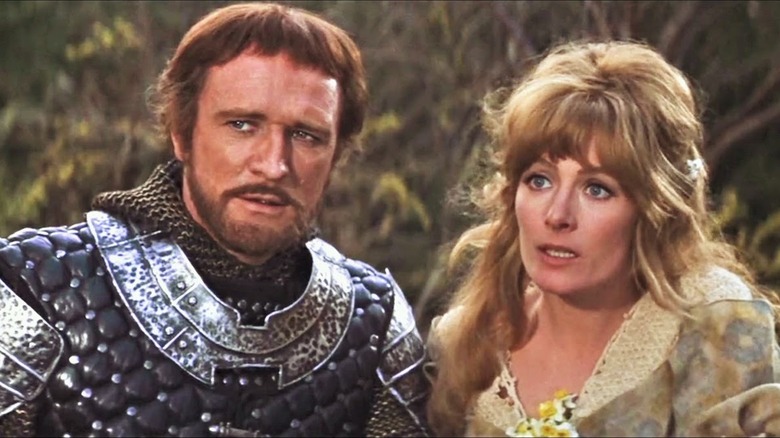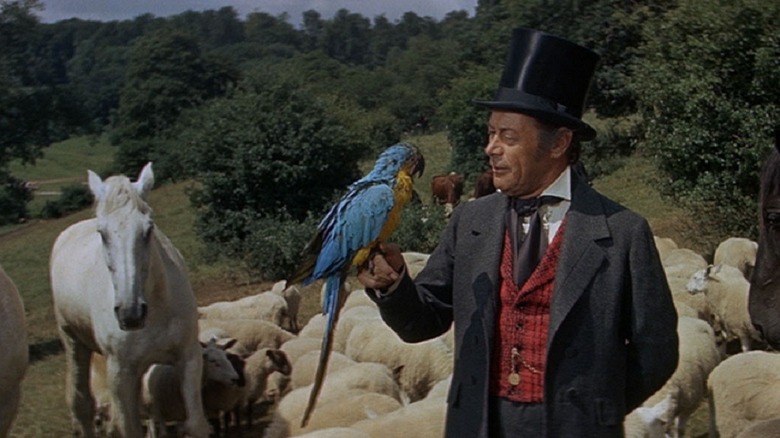These Sound Of Music Copycats Were Some Of The Biggest Flops In Movie History
Throughout the 1950s, big-budget musicals were de rigueur for Hollywood, and there was a sudden glut of epics that sported gigantic budgets, recognizable stars, and no small amount of studio hype. Such films were exhibited as touring roadshow productions, which was a great way for films to make fistfuls of cash. Roadshow epics were also, it should be noted, a concerted ploy by studios to distract audiences from the rising threat of television. Studios felt the need to invest a lot of money into musicals and epics, hoping the massive productions could draw people into theaters and keep the industry afloat.
One might logically predict, however, that Hollywood tried to ride the trend of epics for a little longer than was healthy, and foolish overspending eventually became common. The age of the "roadshow epic" pretty much came to a close with the release of the notorious bomb "Cleopatra" in 1963.
But then, in the mid-1960s, musicals swept back into the consciousness with a one-two-three-punch that no one saw coming. "My Fair Lady," "Mary Poppins," and "The Sound of Music" all came out in 1964 and '65, and three films combined garnered 35 Oscar nominations. "The Sound of Music" made $285 million on an $8.2 million budget. Adjusted for inflation, it's the sixth highest-grossing movie of all time. All of a sudden, a recently dead genre appeared to have new life, and studios — in a flash — immediately started overspending again.
Unfortunately, the magic was gone, and the late '60s saw bomb after bomb as Hollywood misguidedly tried to recapture the "Sound of Music" magic. Indeed, some of those post-"Sound of Music" musicals were among the biggest bombs of all time.
In Scott Eyman's book "20th Century-Fox: Darryl F. Zanuck and the Creation of the Modern Film Studio," the arc downward is laid out in painful detail.
The misguided attempt to resurrect the roadshow
To provide a little more detail, roadshows were a common release format for studio "prestige" fare. It wouldn't be until the mid-1970s that simultaneous nationwide releases became common, and studios used to send a limited number of prints out onto the world, opening in city after city, often playing for months or even years. Roadshows, unlike their limited-release cities-only brethren, didn't come with B-features, cartoons, or shorts, and were presented instead as more "theatrical." Films would be presented with intermissions, entr'actes, and exit music, and audiences would be handed programs or even tie-in merch. The studios did everything they could to make certain films feel "big."
But as stated, that format only worked for so long. After "Cleopatra" tanked — it was made for a bloated $31 million — roadshows were over and done. Dead. Sadly for the studios, the success of "The Sound of Music" indicated that the trend was back, and they perked up. "The old model will work again? Let's keep on investing," they seemed to say.
(On an unrelated note, keep an eye on what happened in Hollywood after "Spider-Man: No Way Home" was a big hit. The superhero genre — as an ascendant Hollywood trend — was dead, but a few latter-day hits are going to fool studios into continued overspending.)
And, wow, the spending! The late 1960s saw the release of many, many expensive — and not very successful — musicals from across all the Hollywood studios. Could a film like Joshua Logan's "Camelot," based on a Lerner & Lowe musical, be the next "Sound of Music?" Could Francis For Coppola's "Finian's Rainbow" with an aging Fred Astaire be the one? Could (yuck) Joshua Logan's "Paint Your Wagon" be the one?
No, no, and no.
So. Many. Bombs.
The bombs kept coming. In addition to the terrible "Paint Your Wagon," Paramount trotted out other notable turkeys like George Sidney's "Half a Sixpence," Vincente Minnelli's "On a Clear Day You Can See Forever" (with Barbra Streisand and Jack Nicholson), and Blake Edwards' "Darling Lili" with Julie Andrews. Disney wasn't free of the trends, and put out their notorious stinker "The Happiest Millionaire." Universal put out film adaptations of "Thoroughly Modern Millie" — also with Julie Andrews — and "Sweet Charity." Flicks like "Chitty Chitty Bang Bang," the not-very-good "Man of La Mancha," and the musical version of "Lost Horizon" all came during this wave.
For Fox, 1967's "Doctor Dolittle" — a Rex Harrison musical about a man who can verbally communicate with animals — was another horrid stinker, costing the studio $17 million, and only earning back $9 million. And who could forget the disappointment of the woefully miscast "Hello, Dolly!" in 1969, a $25 million fiasco that is still infamous to this day. Every studio tried to keep the magic alive, but none of these movies were massive hits. Indeed, most of them lost money.
Fox studio head Richard Zanuck, the son of Darryl, went so far to refer to Robert Wise's 1968 "Star!" (cost: $14 million) as the company's Edsel, a reference to the famously horrible and horrendously unsuccessful 1958 car model put out by Ford.
So what happened?
The world changed. People evolved, tastes changed, and a new generation of filmmakers entered the scene. Why go see a frothy, expensive, dumb-ass musical, when the films of Ingmar Bergman are at the arthouse down the street? "Breathless" rewrote cinema. "2001: A Space Odyssey," "La Dolce Vita," and "The Battle of Algiers" all came out. "Paint Your Wagon" didn't stand a chance.


